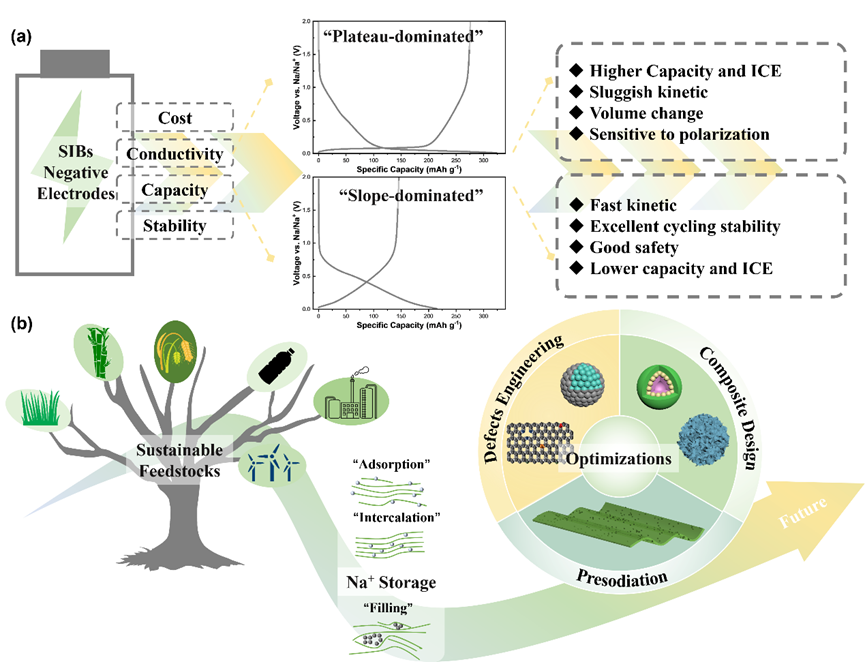Wu et al.’s “Synthesis, storage mechanism and optimization of “slope-dominated” carbons for sodium-ion batteries” recently appeared in Carbon. The review article focuses on the synthesis, storage mechanism and promising optimizations toward “slope-dominated” carbon. This work is done by a joint team and the team is led by Guo-Ming Weng, associate professor of Shanghai Key Laboratory of Hydrogen Science & Center of Hydrogen Science, School of Materials Science and Engineering at Shanghai Jiao Tong University. Other contributors are from The Hong Kong Polytechnic University and Tongji University. The abstract appears below.
“Carbonaceous materials are regarded as most prospective negative electrode materials in SIBs. “Plateau-dominated” and “slope-dominated” carbons are ranked in the option list. The former are extensively investigated out of pursuit for high capacity and energy density, and the latter possess excellent cyclability and fast kinetics emerging from high portion of capacitive contribution, while a disadvantage of lower reversibility in the first few cycles cannot be ignored for “slope-dominated” one. Considering the connatural superiority of “slope-dominated” carbons in long-life fast charge, we aim to fully excavate the potential of this carbon for such an attractive application future. In this review, we systematically investigate the synthesis, storage mechanism and promising optimizations toward “slope-dominated” carbon. Analogous to hard carbon, “slope-dominated” carbons can also be prepared from biomass feedstock. More discussions are included in the synthesis section. Except for proposed “adsorption-intercalation” mechanism according to researches on soft carbons, the existence of “adsorption-intercalation-filling” mechanism determined by the specific carbon microstructures is discussed in the storage mechanism section. Besides, against the problem of low initial Coulombic efficiency, the optimization section summarizes prospective solutions to enhance the reversibility without sacrifice of fast kinetics. This review provides comprehensive insights on developing advanced “slope-dominated” carbons for SIBs.”

Figure 1. a) Schematic illustration of demands for ideal negative electrode materials in SIBs, typical charge/discharge profile of “slope-dominated” and “plateau-dominated” carbons, and a brief comparison between above two carbons. b) Schematic illustration of access to practical and advanced “slope-dominated” carbon electrodes for SIBs.
This work is supported by the National Key R&D Program of China (2022YFC3900700), Shanghai Key Laboratory of Hydrogen Science & Center of Hydrogen Science of Shanghai Jiao Tong University, and Shanghai High-Level Oversea Talents Award, etc.
Read the full article: https://doi.org/10.1016/j.carbon.2025.119985
